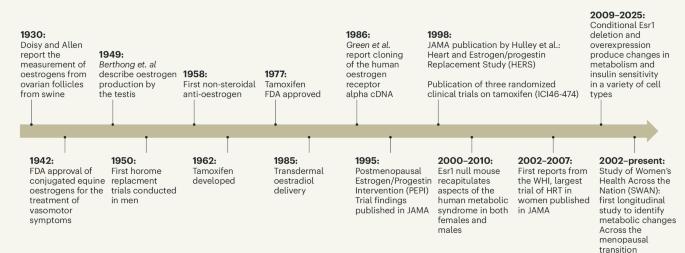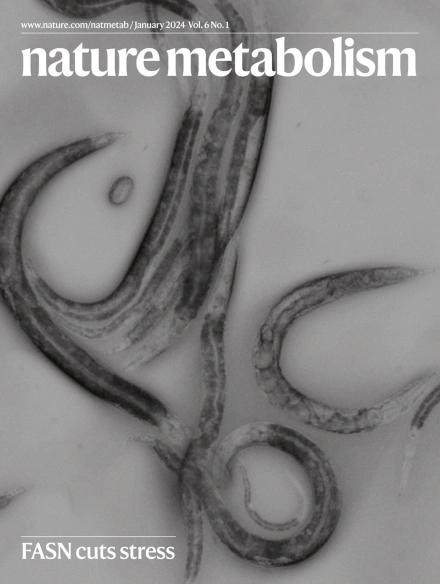Metabolic Messengers: oestradiol
IF 20.8
1区 医学
Q1 ENDOCRINOLOGY & METABOLISM
引用次数: 0
Abstract
Oestradiol (E2), a steroid hormone derived from cholesterol, has long been recognized for its central role in female reproduction and pathobiology of menopause. However, accumulating evidence underscores a critical role for E2 in the regulation of systemic metabolism in both women and men. The metabolic actions of E2 are predominantly mediated by oestrogen receptor α (encoded by ESR1), a nuclear receptor with heritable expression patterns and tissue-specific transcript levels highly correlated with indices of metabolic health in both sexes. Here we provide an overview of the cell-specific actions of E2 and its receptors (α and β) in modulating key metabolic pathways. We contextualize these mechanistic preclinical studies with epidemiological data linking the menopausal transition to a marked rise of metabolic disease risk and provide evidence that E2 replacement mitigates this risk by preserving metabolic health. Hevener and Correa provide a comprehensive overview of the preclinical and clinical evidence showing the metabolic role of oestradiol and its receptors in both women and men.


代谢信使:雌二醇
雌二醇(E2)是一种从胆固醇中提取的类固醇激素,长期以来一直被认为在女性生殖和更年期病理生物学中起着核心作用。然而,越来越多的证据强调E2在调节女性和男性全身代谢中的关键作用。E2的代谢作用主要由雌激素受体α (ESR1编码)介导,雌激素受体α是一种具有遗传表达模式的核受体,其组织特异性转录水平与两性代谢健康指数高度相关。在这里,我们概述了E2及其受体(α和β)在调节关键代谢途径中的细胞特异性作用。我们将这些机制的临床前研究与流行病学数据联系起来,将更年期过渡与代谢性疾病风险的显着增加联系起来,并提供E2替代通过保持代谢健康来减轻这种风险的证据。
本文章由计算机程序翻译,如有差异,请以英文原文为准。
求助全文
约1分钟内获得全文
求助全文
来源期刊

Nature metabolism
ENDOCRINOLOGY & METABOLISM-
CiteScore
27.50
自引率
2.40%
发文量
170
期刊介绍:
Nature Metabolism is a peer-reviewed scientific journal that covers a broad range of topics in metabolism research. It aims to advance the understanding of metabolic and homeostatic processes at a cellular and physiological level. The journal publishes research from various fields, including fundamental cell biology, basic biomedical and translational research, and integrative physiology. It focuses on how cellular metabolism affects cellular function, the physiology and homeostasis of organs and tissues, and the regulation of organismal energy homeostasis. It also investigates the molecular pathophysiology of metabolic diseases such as diabetes and obesity, as well as their treatment. Nature Metabolism follows the standards of other Nature-branded journals, with a dedicated team of professional editors, rigorous peer-review process, high standards of copy-editing and production, swift publication, and editorial independence. The journal has a high impact factor, has a certain influence in the international area, and is deeply concerned and cited by the majority of scholars.
 求助内容:
求助内容: 应助结果提醒方式:
应助结果提醒方式:


